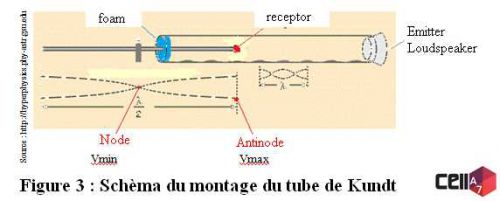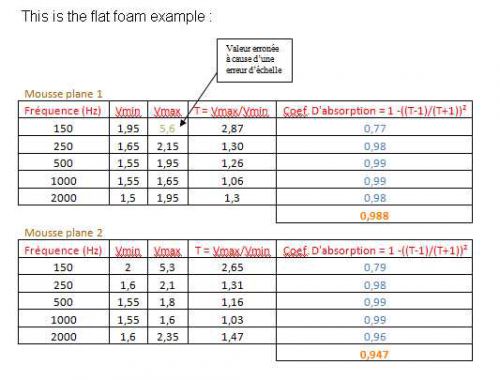Kundt’s tube
This experiment consists in emitting a sound wave thanks to a loudspeaker and a signal generator. The foam sample is put on one side and the emitter on the other side. The receptor can be moved along the tube so the wave signal is received from different places (figures below).
We see the signal on an oscilloscope. This way, results of the tension from a node, maximum tension (Vmax), and from an antinode, minimum tension (Vmin), are revealed from different frequencies.
Thanks to this differents results of Vmax and Vmin, a mean value of absorption coefficient of the material is determined as :
T = Vmax / Vmin
And a, the absorption coefficient is 
2000 Hz is equivalent to the limit frequency of the Kundt’s tube. Range frequency is between Fmin and Fmax, which depend of the tube’s dimension.
Fmin = c / (2L) and Fmax = c / (2D) with : c the speed of sound in air (344 m/s)
L tube’s length
D tube’s diameter
Knowing that human can hear frequencies between 20Hz and 20 000Hz.
The average coefficients obtained are : 0.991 for the convoluted foam
0.967 for the plate foam
0.921 for the empty measure
This results can’t be considered because the equipment is old and the measure imprecise.
However, we keep the method and it could be repeat to a better characterization.


